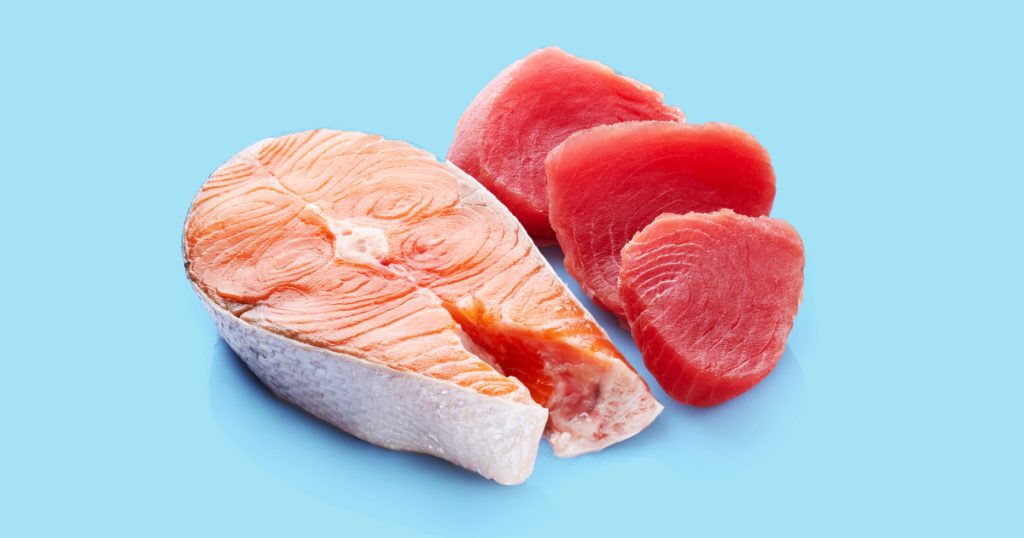Salmon and tuna are popular seafood choices in the United States and are both packed with nutrients. The Dietary Guidelines for Americans recommend consuming at least eight ounces of fish per week to support overall health. Salmon is available in both Pacific and Atlantic varieties, with wild-caught salmon being slightly higher in protein and omega-3 fatty acids compared to farmed Atlantic salmon. One serving of wild sockeye salmon provides 155 calories, 22 grams of protein, and high levels of essential vitamins and minerals.
Tuna, on the other hand, is known for its high protein content and low calorie levels. Yellowfin tuna, a popular variety, offers 110 calories, 25 grams of protein, and significant amounts of selenium and niacin per serving. Tuna has a firmer texture and meatier taste compared to salmon. Both fish offer unique benefits and can be part of a balanced diet. Salmon is rich in vitamin D and vitamin B12, while tuna is a good source of selenium and niacin. However, tuna is generally higher in protein content compared to salmon.
The omega-3 fatty acids in salmon provide numerous health benefits, supporting heart health, brain function, and eye health. These essential fats are not produced by the body and must be obtained from food sources. Salmon is rich in omega-3s like EPA and DHA, while tuna contains lower levels of these fatty acids. However, tuna is a lean source of protein and is lower in fat and calories compared to salmon, making it a good choice for those looking to manage their weight.
Mercury content is a concern when consuming seafood, as high levels can be harmful to human health. Salmon is considered a low-mercury option and is safe to consume regularly. Certain tuna species, such as yellowfin and albacore, are higher in mercury and should be consumed in moderation. Pregnant women, breastfeeding mothers, and young children are advised to choose lower-mercury fish varieties. Both salmon and tuna are nutritious options, but the healthiest choice will depend on individual preferences and dietary needs.
Experts recommend including a variety of fish in the diet to ensure optimal nutrient intake. Canned salmon and tuna are convenient and affordable options that offer similar benefits to fresh fish. Canned fish packed in water or olive oil, low in sodium, and sold in BPA-free cans are the best choices. Skipjack or light tuna are lower in mercury and can be consumed more frequently. Ultimately, incorporating both salmon and tuna into a balanced diet can provide a range of nutrients and health benefits.


